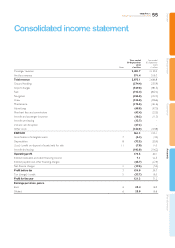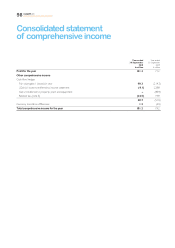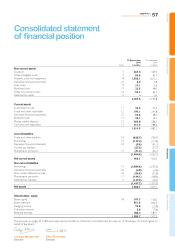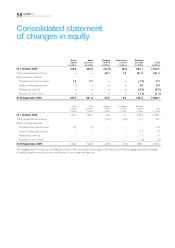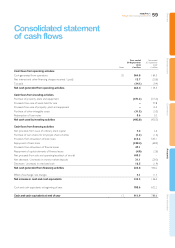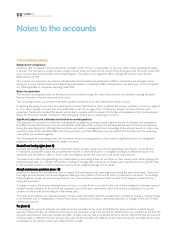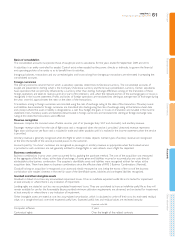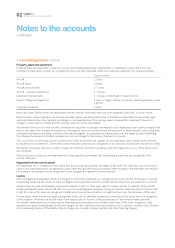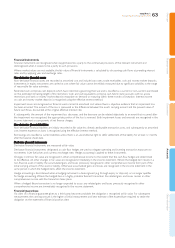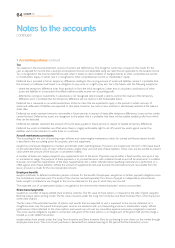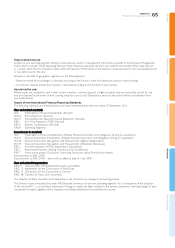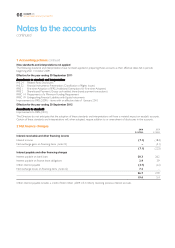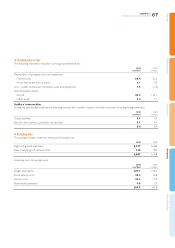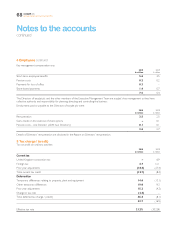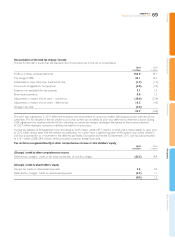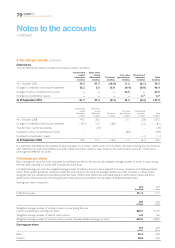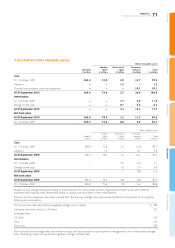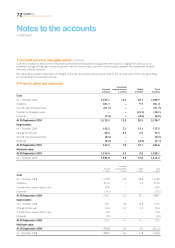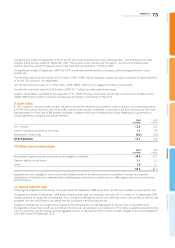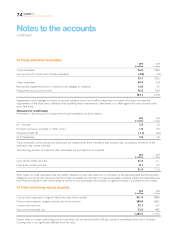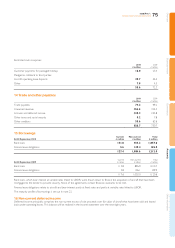EasyJet 2010 Annual Report Download - page 67
Download and view the complete annual report
Please find page 67 of the 2010 EasyJet annual report below. You can navigate through the pages in the report by either clicking on the pages listed below, or by using the keyword search tool below to find specific information within the annual report.
Overview Business review Governance Accounts Other information
easyJet plc
Annual report and accounts 2010
65
Segmental disclosures
easyJet has one operating segment, being its route network, based on management information provided to the Executive Management
Team; which is easyJet’s Chief Operating Decision Maker. Resource allocation decisions are made for the benefit of the route network
as a whole, rather than for individual routes within the network. Performance of the network is assessed based on the consolidated profit
or loss before tax for the year.
Revenue is allocated to geographic segments on the following bases:
– Revenue earned from passengers is allocated according to the location of the first departure airport on each booking;
– Commission revenue earned from partners is allocated according to the domicile of each partner.
Assets held for sale
Where assets are available for sale in their current condition, and their disposal is highly probable, they are reclassified as held for sale
and are measured at the lower of their carrying value less costs to sell. Depreciation ceases at the point of their reclassification from
non-current assets.
Impact of new International Financial Reporting Standards
The following standards and interpretations have been implemented for the year ended 30 September 2010:
New and revised standards
IAS 1 Presentation of Financial Statements (Revised)
IAS 23 Borrowing Costs (Revised)
IAS 27 Consolidated and Separate Financial Statements (Revised)
IFRS 1 First Time Adoption of IFRS (Revised)
IFRS 3 Business Combinations (Revised)
IFRS 8 Operating Segments
Amendments to standards
IAS 1 Presentation of Financial Statements (Puttable Financial Instruments and Obligations Arising on Liquidation)
IAS 32 Financial Instruments: Presentation (Puttable Financial Instruments and Obligations Arising on Liquidation)
IAS 39 Financial Instruments: Recognition and Measurement (Eligible Hedged Items)
IAS 39 Financial Instruments: Recognition and Measurement (Embedded Derivatives)
IFRS 1 First-time Adoption of IFRS (Investment in Subsidiaries)
IFRS 2 Share-based Payment (Vesting Conditions and Cancellations)
IFRS 7 Financial Instruments: Disclosures (Improving Disclosures about Financial Instruments)
Improvements to IFRS (2007)
Improvements to IFRS (2009) – items with an effective date of 1 July 2009
New and revised interpretations
IFRIC 9 Reassessment of Embedded Derivatives (Amended)
IFRIC 15 Agreements for the Construction of Real Estate
IFRIC 17 Distribution of Non-Cash Assets to Owners
IFRIC 18 Transfers of Assets from Customers
The adoption of these standards and interpretations has not led to any changes in accounting policies.
The Directors have concluded that under IFRS 8 easyJet continues to have one operating segment. As a consequence of the adoption
of the revised IAS 1, a consolidated statement of changes in equity has been included in the primary statements, showing changes in each
component of equity, together with a separate consolidated statement of comprehensive income.


